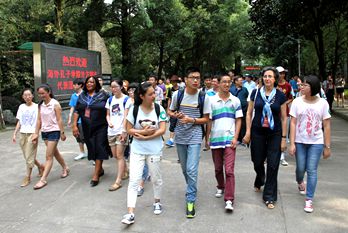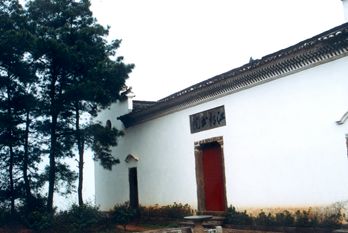Historical sites in Changshan
Lize Temple

The interior of Lize Temple in Tianma street, Changshan county, Quzhou. [Photo/qz123.com]
Lize Temple is located in Tianma street, Changshan county, Quzhou, Zhejiang province. It is the ancestral hall of the Xu family in Changshan county. Xu Daxing, the prefecture chief of Quzhou in the Southern Song Dynasty (1127-1279), was the ancestor of the ancestral hall.
The temple was first built in 1441, and rebuilt in 1792 and 1906. It is one of the few surviving ancient buildings in Changshan county.
Ancient building with thirty-six courtyards

An aerial view of an ancient building with thirty-six courtyards in Qiuchuan town, Changshan county, Quzhou. [Photo/qz123.com]
Located in Qiuchuan town, Changshan county, Quzhou, Zhejiang Province, the ancient building with thirty-six courtyards was built during the reign of Emperor Tongzhi of the Qing Dynasty (1644-1911).
Traditional building structures such as the five-lifting beam frame type and column-and-tie construction can be seen in the building. Its beams, columns, lintels and walls are carved with exquisite patterns of birds, animals and flowers.
Wenfeng Tower

A view of Wenfeng Tower at the top of Wenfeng Mountain in Changshan county, Quzhou. [Photo/qz123.com]
Wenfeng Tower is located at the top of Wenfeng Mountain in Tashan Park in Changshan county, Quzhou, Zhejiang province. It was listed as a provincial-level cultural relic protection unit by the Zhejiang Provincial People's Government in January 2017.
The tower is one of the few brick towers in Changshan county and has cultural value for the study of high-rise buildings in the county.
Fangcun Old Street

A view of Fangcun Old Street in Changshan county, Quzhou. [Photo/qz123.com]
Fangcun Old Street has a history of over 800 years. Most of the buildings from the Ming (1368-1644) and Qing dynasties (1644-1911) on the old street are well-preserved, and traditional handicrafts such as iron forging, coopering, and haircutting can be seen on the street.

 City brand logo - fist-and-palm salute
City brand logo - fist-and-palm salute Confucianism on campus
Confucianism on campus The culture of the academy
The culture of the academy